Monthly Archives: March 2023
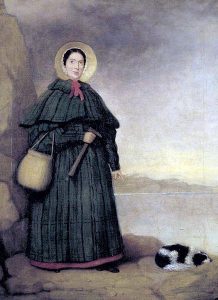 Few kids know what they want to do with their lives by the time they are ten or twelve, but twelve-year-old British fossil collector and paleontologist Mary Anning already knew. She was the child of a poor family, and she made her first archeological discovery the year she turned twelve. Anning searched for fossils in the area’s Blue Lias cliffs, particularly during the winter months when landslides exposed new fossils that had to be collected quickly before they were lost to the sea. One day, while fossil-hunting on the cliffs of Lyme Regis, England, Anning found what was believed to be the first dinosaur skeleton…an ichthyosaur, a prehistoric reptile.
Few kids know what they want to do with their lives by the time they are ten or twelve, but twelve-year-old British fossil collector and paleontologist Mary Anning already knew. She was the child of a poor family, and she made her first archeological discovery the year she turned twelve. Anning searched for fossils in the area’s Blue Lias cliffs, particularly during the winter months when landslides exposed new fossils that had to be collected quickly before they were lost to the sea. One day, while fossil-hunting on the cliffs of Lyme Regis, England, Anning found what was believed to be the first dinosaur skeleton…an ichthyosaur, a prehistoric reptile.
Prior to Anning’s discovery, people didn’t believe that anima extinction was a real thing. Anning was up against some big obstacles in the field of science, because of her gender, so it was amazing that her findings were given any credence at all. In addition, her social class…a big thing in those days, also made it difficult for her to fully participate in the scientific community of 19th-century Britain. Nevertheless, she read as much scientific literature as she could get her hands on and went on to become a renowned fossil-hunter and dealer, often risking her life in the face of landslides and daunting cliffs. She was not going to let her gender or social class stop her from using her mind to its fullest capacity. She wanted to learn more and discover more, and she was determined to do so. Anning did get some of the recognition she deserved when the great Stephen Jay Gould, who was the most beloved popular science writer of all time, called her “probably the most important unsung (or inadequately sung) collecting force in the history of paleontology.” To say the least, her work started a fundamental shift in scientific thinking about prehistoric life in the early 19th century.
Mary Anning was born on May 21, 1799. She struggled financially for much of her life. Her family was poor. Her father, a cabinetmaker, died when she was eleven. Anning, herself, nearly died in 1833 during a landslide that killed her dog, Tray. Working in landslide conditions was dangerous, but it was often her only chance to make her discoveries. Nevertheless, this English fossil collector, dealer, and paleontologist, went on to become known around the world for important finds she made in Jurassic marine fossil beds in the cliffs along the English Channel. In addition to the ichthyosaur, she found the first two more complete plesiosaur skeletons, the first pterosaur skeleton located outside Germany, and important fish fossils. Her observations also played a key role in the discovery that “coprolites, known as bezoar stones at the time, were fossilized feces. She also discovered that belemnite fossils contained fossilized ink sacs like those of modern cephalopods.” When geologist Henry De la Beche painted Duria Antiquior, the first widely circulated pictorial representation of a scene from prehistoric life derived from fossil reconstructions, he based it largely on fossils Anning had found, and sold prints of it for her benefit. A wonderful act of kindness.
Anning was not able to fully participate in the scientific community of 19th-century Britain, who were mostly Anglican gentlemen. Nevertheless, she became well known in geological circles in Britain, Europe, and America, and was consulted on issues of anatomy, as well as about collecting fossils. Still, as a woman, she was not eligible to join the Geological Society of London and she did not always receive full credit for her scientific 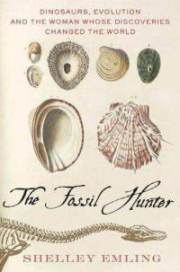 contributions…and incredible injustice. As a result, she wrote in a letter, “The world has used me so unkindly, I fear it has made me suspicious of everyone.” There was only one scientific writing of hers that was published in her lifetime. It appeared in the Magazine of Natural History in 1839. It was simply an extract from a letter that Anning had written to the magazine’s editor questioning one of its claims. It seems surprising to me that they printed that at all.
contributions…and incredible injustice. As a result, she wrote in a letter, “The world has used me so unkindly, I fear it has made me suspicious of everyone.” There was only one scientific writing of hers that was published in her lifetime. It appeared in the Magazine of Natural History in 1839. It was simply an extract from a letter that Anning had written to the magazine’s editor questioning one of its claims. It seems surprising to me that they printed that at all.
After her death on March 9, 1847, her unusual life story finally began to gain the interest it deserved. An uncredited author in All the Year Round, edited by Charles Dickens, wrote of her in 1865 that “[t]he carpenter’s daughter has won a name for herself, and has deserved to win it.” It has often been claimed that her story was the inspiration for the 1908 tongue-twister “She sells seashells on the seashore” by Terry Sullivan, but that has not been confirmed. In 2010, a full 163 years after her death, the Royal Society finally included Anning in a list of the ten British women who have most influenced the history of science. Rather late in all reality.
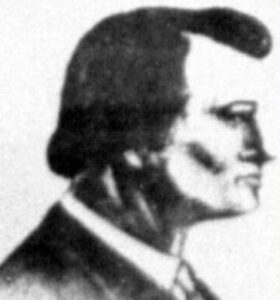 Joseph Alfred “Jack” Slade was a stagecoach and Pony Express superintendent early in his life. He was instrumental in the opening of the American West, and he was also the archetype of the Western gunslinger. Slade was born on January 22, 1831, in Carlyle, Illinois, the son of Illinois politician Charles Slade and Mary Dark (Kain) Slade. Slade’s life started out decent. He served in the US Army that occupied Santa Fe, 1847-1848, during the Mexican War. His father died in 1834, Slade’s mother married Civil War General Elias Dennis in 1838, when Slade was just seven years old.
Joseph Alfred “Jack” Slade was a stagecoach and Pony Express superintendent early in his life. He was instrumental in the opening of the American West, and he was also the archetype of the Western gunslinger. Slade was born on January 22, 1831, in Carlyle, Illinois, the son of Illinois politician Charles Slade and Mary Dark (Kain) Slade. Slade’s life started out decent. He served in the US Army that occupied Santa Fe, 1847-1848, during the Mexican War. His father died in 1834, Slade’s mother married Civil War General Elias Dennis in 1838, when Slade was just seven years old.
In about 1857, Slade married a woman named Maria Virginia. Her maiden name is unknown. In the 1850s, he was a freighting teamster and wagon master along the Overland Trail, and then became a stagecoach driver in Texas, around 1857-1858. After years on the job, Slade became a stagecoach division superintendent along the Central Overland route for Hockaday and Company from 1858–1859, and when it was purchased, he worked for its successors Jones, Russell and Company in 1859 and Central Overland, California and Pike’s Peak Express Company from 1859 to 1862. With the latter concern, he also helped launch and operate the Pony Express in 1860-61. These were critical lines of communication between the East and California. As superintendent, he enforced order and assured reliable cross-continental mail service, maintaining contact between Washington DC, and California on the eve of Civil War.
Slade was know as a strict, and even ferocious boss. While division superintendent, he shot and killed Andrew Ferrin, one of his subordinates, who was hindering the progress of a freight train, in May 1859. This type of situation was rare for the time, but it served to build his reputation as a gunslinger. In March 1860, Slade was ambushed and left for dead by Jules Beni, who was a corrupt stationkeeper at Julesburg, Colorado, and whom Slade had removed. Remarkably, Slade survived, and in August 1861, Beni was killed by Slade’s men after 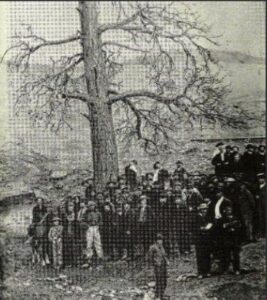 ignoring Slade’s warning to stay out of his territory.
ignoring Slade’s warning to stay out of his territory.
Slade’s temper and the reputation that came with it, combined with a drinking problem, caused his downfall. After he was fired by the Central Overland for drunkenness in November 1862, Slade crossed paths with the Virginia City Vigilance Committee, which was composed of honest, determined citizens, including bankers, storekeepers, miners, stockbrokers, and other citizens of all backgrounds, who had decided to take the law into their own hands and combat lawlessness in Virginia City. Slade found himself in Virginia City, Montana on a drunken spree. After being arrested, he was lynched by local vigilantes on March 10, 1864, for disturbing the peace. Of all the killings he was guilty of, Slade was lynched for disturbing the peace. Unbelievable, but the truth, nevertheless. He was buried in Salt Lake City, Utah, on July 20, 1864.

 My grandniece, Manuela Ortiz joined our family on July 18, 2021, when she married my grandnephew, James Renville. Manuela is such a happy person, and she brings so much sunshine into the lives of our family. She is an excellent dancer, and James is learning to dance too. They have even done some videos of them dancing and placed them online. Not everyone has the coordination to do things like Salsa dancing, but Manuela certainly does…and I’ll have to leave that to her. It’s best that way.
My grandniece, Manuela Ortiz joined our family on July 18, 2021, when she married my grandnephew, James Renville. Manuela is such a happy person, and she brings so much sunshine into the lives of our family. She is an excellent dancer, and James is learning to dance too. They have even done some videos of them dancing and placed them online. Not everyone has the coordination to do things like Salsa dancing, but Manuela certainly does…and I’ll have to leave that to her. It’s best that way.
Speaking fluent Spanish makes Manuela as asset to Wyoming  Housing Network, where she is a housing counselor. When Manuela first came to America from Columbia, it was with the intent to study English, so that when she went back home, she could move up in her company. Things changed as time went by, and before long, she knew that she wanted to immigrate to America permanently. That was in the works, when she met her future husband, my grandnephew, James Renville. They met in 2019 and have been inseparable ever since.
Housing Network, where she is a housing counselor. When Manuela first came to America from Columbia, it was with the intent to study English, so that when she went back home, she could move up in her company. Things changed as time went by, and before long, she knew that she wanted to immigrate to America permanently. That was in the works, when she met her future husband, my grandnephew, James Renville. They met in 2019 and have been inseparable ever since.
Recently, Manuela decided to write an e-book called The Stages of an Immigrant: Stories of an Immigrant. In her book, she tells about her own experiences as she navigated the immigration system of the United States. We are all very proud of Manuela and her journey to become an American citizen the right way.
This past Christmas, Manuela got to go back to Columbia to visit her family for the holidays. Having been here when Covid hit, she hasn’t been able to go back home, and that has been so hard. Manuela has embraced her 
 Wyoming family, and totally loves her Wyoming Cowboy (her husband, James), but this was a special trip and very fun for her. Aside from the climate difference, there are many different customs that go along with the holidays too. The decorations alone are very different. I’m sure that as the years go by, Manuela will incorporate some of her family’s traditions into Christmases here and maybe some of ours in future Christmases there. Today is Manuela’s birthday. Happy birthday Manuela!! Have a great day!! We love you!!
Wyoming family, and totally loves her Wyoming Cowboy (her husband, James), but this was a special trip and very fun for her. Aside from the climate difference, there are many different customs that go along with the holidays too. The decorations alone are very different. I’m sure that as the years go by, Manuela will incorporate some of her family’s traditions into Christmases here and maybe some of ours in future Christmases there. Today is Manuela’s birthday. Happy birthday Manuela!! Have a great day!! We love you!!
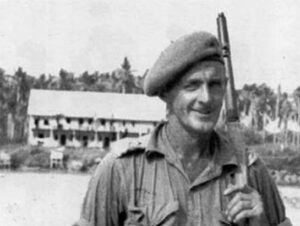 Soldiers everywhere have varied backgrounds, but maybe more so during World War I and World War II, as well as wars in which there was a draft. Robert Kerr “Jock” McLaren was a veterinarian by trade, but during his service with the Second Australian Imperial Force, he also became a feared guerrilla fighter who ran missions against the Japanese. I suppose that, while a veterinarian doesn’t work on humans, possessing certain skills would be important in certain situations. McLaren spent countless hours, days, and weeks in the jungles, and after one such assignment, his medical skills suddenly became urgently needed…on himself. McLaren found himself faced with surgery on himself, or certain death. So, in order to save his own life, McLaren set about to remove his own appendix…in the jungle, with a pen knife, two spoons, and coconut fibers.
Soldiers everywhere have varied backgrounds, but maybe more so during World War I and World War II, as well as wars in which there was a draft. Robert Kerr “Jock” McLaren was a veterinarian by trade, but during his service with the Second Australian Imperial Force, he also became a feared guerrilla fighter who ran missions against the Japanese. I suppose that, while a veterinarian doesn’t work on humans, possessing certain skills would be important in certain situations. McLaren spent countless hours, days, and weeks in the jungles, and after one such assignment, his medical skills suddenly became urgently needed…on himself. McLaren found himself faced with surgery on himself, or certain death. So, in order to save his own life, McLaren set about to remove his own appendix…in the jungle, with a pen knife, two spoons, and coconut fibers.
McLaren was just a teenager during World War I, when he served with the 51st (Highland) Division of the British Army. Because he was so young then, it’s unlikely that he saw combat on the Western Front. Nevertheless, his name is found on the rolls from his division’s time in France in 1918. That made people wonder if he participated in fighting during the Spring Offensive. Following the war, McLaren returned to 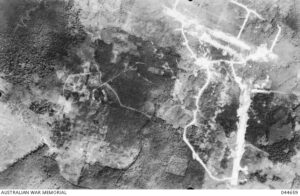 Scotland and completed training to become a veterinarian. He then moved to Queensland, Australia, where he worked as a veterinary officer in Bundaberg.
Scotland and completed training to become a veterinarian. He then moved to Queensland, Australia, where he worked as a veterinary officer in Bundaberg.
When World War II began, McLaren volunteered for the Second Australian Imperial Force. McLaren, 39 years old at the time, was assigned to the 2/10th Australian Field Workshops, 8th Australian Division and stationed in Singapore. McLaren spent time in a POW camp and escaped along with two other soldiers. After being tortured and faced with a firing squad, the trio were ultimately returned to their cells. McLaren, along with 1,000 British and Australian soldiers, was later transferred to Borneo and held at the Sandakan camp. He made plans to escape again, this time with a Chinese POW named Johnny Funk. The escape took the men to the large Philippine Island of Mindanao, where they joined the resistance led by American Reserve Officer, Lt. Col. Wendell Fertig. He was later given the chance to return to Australia, but chose to remain a guerrilla.
It was during his time as a guerrilla that McLaren’s appendicitis attack occurred. During one patrol as a 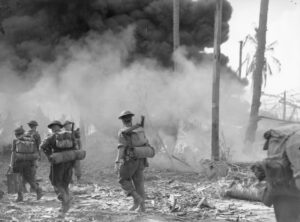 guerrilla, McLaren developed a severe case of appendicitis. He knew enough to know that he was going to have to treat himself, or he would die. So, he performed surgery with just a penknife and two spoons. He stitched the incision with coconut fibers. When asked about the act years later, he said, “It was hell, but I came through alright.” A modest remark for such a remarkable act…in the middle of a Philippine jungle in 1944, without any anesthetic and with only the use of a mirror to see. The operation took 4½ hours. Still, as he said he came through it alright, and he would not be that last person to do surgery on themselves. Nevertheless…remarkable.
guerrilla, McLaren developed a severe case of appendicitis. He knew enough to know that he was going to have to treat himself, or he would die. So, he performed surgery with just a penknife and two spoons. He stitched the incision with coconut fibers. When asked about the act years later, he said, “It was hell, but I came through alright.” A modest remark for such a remarkable act…in the middle of a Philippine jungle in 1944, without any anesthetic and with only the use of a mirror to see. The operation took 4½ hours. Still, as he said he came through it alright, and he would not be that last person to do surgery on themselves. Nevertheless…remarkable.
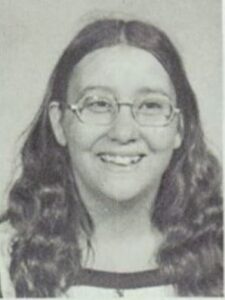
 My cousin, Darla Stanko passed away on February 26, 2023, at 63 just years old. As I think of Darla, I remember her laugh, which was just like her mother’s. It was sweet and a little shy, but when they laughed…you laughed, because their laugh was contagious. As kids, we would all go down in Grandma Byer’s basement to play, while the grownups visited upstairs. Grandma’s basement was a little creepy and worked well as a “haunted” house…if the kids liked that sort of thing. Some did and some didn’t. I preferred other games. I think Darla did too. She had asthma and scary stuff could trigger things.
My cousin, Darla Stanko passed away on February 26, 2023, at 63 just years old. As I think of Darla, I remember her laugh, which was just like her mother’s. It was sweet and a little shy, but when they laughed…you laughed, because their laugh was contagious. As kids, we would all go down in Grandma Byer’s basement to play, while the grownups visited upstairs. Grandma’s basement was a little creepy and worked well as a “haunted” house…if the kids liked that sort of thing. Some did and some didn’t. I preferred other games. I think Darla did too. She had asthma and scary stuff could trigger things.
As kids do, we all grew up…quicker than we would ever have dreamed possible. Before long, babies were coming along. I remember talking to Darla once. She told me that without a doubt, the best thing she ever did was JeanAnn, and of that I have no doubt. For a mom to look at the beautiful little baby they have just given birth to…there is no greater honor. Kids are a big part of our lives, and games are a part of kids. JeanAnn told me about the times she and her mom played cards. Their favorite game was Speed…which is a high drama card matching game for two players. It was perfect for them.
The other thing that JeanAnn and her mom loved to do was to spend time jumping on the trampoline in their yard. I can just picture it now, a summer evening in the back yard, just the two girls, jumping and giggling the hours away. Of course, there was also their dog, Nelly with them too. Now Nelly was a different sort of dog. She was very gentle with JeanAnn, but then she was JeanAnn’s guard dog. She was also gentle with Darla too…except for that one time. JeanAnn could make Nelly mad and then point at a new person, and Nelly would go get that person. That was all well and good…until JeanAnn did that to her mom. My guess is that JeanAnn had no idea what was about to take place. Darla saw it coming, and she jumped on the furniture to get away from the guard dog that was now hot on her trail. She almost knocked herself out jumping down. JeanAnn 
 says, “It was great” and maybe it was…for her anyway. Darla…maybe not so much, but I’m sure she laughed about it later.
says, “It was great” and maybe it was…for her anyway. Darla…maybe not so much, but I’m sure she laughed about it later.
Now, for me, possibly the funniest story about Darla’s life was the “fateful” trip to Denver. Darla decided to take her daughter to Denver, and to take her mom, my Aunt Delores Johnson with them. She needed a “navigator” and while I can’t picture my Aunt Dee in that capacity, maybe Darla thought map reading was like breathing…anyone could do it. My thought is, “Have you met your mother?” Anyway, off they went, and to make a long story short, they ended up on a one street in rush hour traffic, going the wrong way!!” Oh yes, that’s the Aunt Dee I know, and I can totally picture that whole situation…once I can stop laughing!!
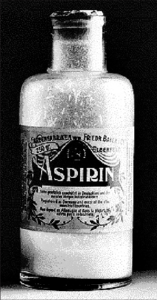
 Who hasn’t heard of Bayer Aspirin, or at the very least, aspirin? It has been a staple in households for as many as 124 years…until the Tylenol push, which in my opinion is the least effective pain medication of all time!!! Aspirin was developed from acetylsalicylic acid, which can be found in the bark of willow trees. Of course, it didn’t originate there. In its most primitive form, the active ingredient, Salicin was used for centuries in folk medicine, beginning in ancient Greece when Hippocrates used it to relieve pain and fever. I guess “modern medicine” hasn’t progressed so far after all. The Bayer version of aspirin was developed in Germany and patented on March 6, 1899. Even then, its unpleasant taste and tendency to damage the stomach, caused its sparing use. In the most modern adaptation of aspirin, the Bayer version, Bayer employee Felix Hoffmann found a way to create a stable form of the drug that was easier and more pleasant to take. Some evidence shows that Hoffmann’s work was really done by a Jewish chemist, Arthur Eichengrun, whose contributions were covered up during the Nazi era. After obtaining the patent rights, Bayer began distributing aspirin in powder form to physicians to give to their patients one gram at a time. The brand name came from “A” for acetyl, “spir” from the spirea plant, which was a source of salicin, and the suffix “in,” commonly used for medications. It quickly became the number-one drug worldwide.
Who hasn’t heard of Bayer Aspirin, or at the very least, aspirin? It has been a staple in households for as many as 124 years…until the Tylenol push, which in my opinion is the least effective pain medication of all time!!! Aspirin was developed from acetylsalicylic acid, which can be found in the bark of willow trees. Of course, it didn’t originate there. In its most primitive form, the active ingredient, Salicin was used for centuries in folk medicine, beginning in ancient Greece when Hippocrates used it to relieve pain and fever. I guess “modern medicine” hasn’t progressed so far after all. The Bayer version of aspirin was developed in Germany and patented on March 6, 1899. Even then, its unpleasant taste and tendency to damage the stomach, caused its sparing use. In the most modern adaptation of aspirin, the Bayer version, Bayer employee Felix Hoffmann found a way to create a stable form of the drug that was easier and more pleasant to take. Some evidence shows that Hoffmann’s work was really done by a Jewish chemist, Arthur Eichengrun, whose contributions were covered up during the Nazi era. After obtaining the patent rights, Bayer began distributing aspirin in powder form to physicians to give to their patients one gram at a time. The brand name came from “A” for acetyl, “spir” from the spirea plant, which was a source of salicin, and the suffix “in,” commonly used for medications. It quickly became the number-one drug worldwide.
In the beginning, like most drugs, Aspirin was a prescription-only drug, but in 1915, Aspirin was made available in tablet form and without a prescription. In 1917, when Bayer’s patent expired during the First World War, the Bayer company lost the trademark rights to aspirin in various countries. After the United States entered the war against Germany in April 1917, the Alien Property Custodian, a government agency that administers foreign property, seized Bayer’s US assets. Two years later, the Bayer company name and trademarks for the United States and Canada were auctioned off and purchased by Sterling Products Company, later Sterling Winthrop, for $5.3 million. 

As companies do, with mergers and splits, Bayer became part of IG Farben, the conglomerate of German chemical industries that formed the financial heart of the Nazi regime. Then after the Nazi defeat in World War II, the Allies split apart IG Farben, and Bayer again emerged as an individual company. With its purchase of Miles Laboratories in 1978, came a product line including Alka-Seltzer and Flintstones and One-A-Day Vitamins. Then in 1994, coming full circle, Bayer bought Sterling Winthrop’s over-the-counter business, which allowed it to gain back the rights to the Bayer name and logo, and after almost 100 years, and the company once again was allowed to profit from American sales of its most famous product.
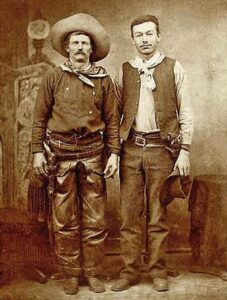
 When we think of a cowboy, we usually picture the American Cowboy, rough and rugged wearing a cowboy hat, a gun on his hip, and riding he favorite horse around the Old West. One thing we wouldn’t think of is that we really wouldn’t think of an American Cowboy being born in Canada. Nevertheless, one of the most “unusual” American Cowboys was actually born in Canada. His name was Charles Nebo, or as he was known by nickname, Charley, and he was born in March of 1842. Charles Nebo wasn’t your typical cowboy and might have even been more Forrest Gump than soldier, although he wasn’t autistic, like Forrest Gump was…or at least, not that anyone knew of.
When we think of a cowboy, we usually picture the American Cowboy, rough and rugged wearing a cowboy hat, a gun on his hip, and riding he favorite horse around the Old West. One thing we wouldn’t think of is that we really wouldn’t think of an American Cowboy being born in Canada. Nevertheless, one of the most “unusual” American Cowboys was actually born in Canada. His name was Charles Nebo, or as he was known by nickname, Charley, and he was born in March of 1842. Charles Nebo wasn’t your typical cowboy and might have even been more Forrest Gump than soldier, although he wasn’t autistic, like Forrest Gump was…or at least, not that anyone knew of.
Charlie never tried to inflate his achievements and was happy to live like a true frontier man, nevertheless, people often made him sound like he was…maybe, a little bit more of a cowboy than he actually was. I suppose it made no sense to say that he was just a “good old boy” from out west. People don’t expect that, and maybe, they just wouldn’t read about it, either, but the reality is that there were more average people in the American West than there were the wild people who made the West famous.
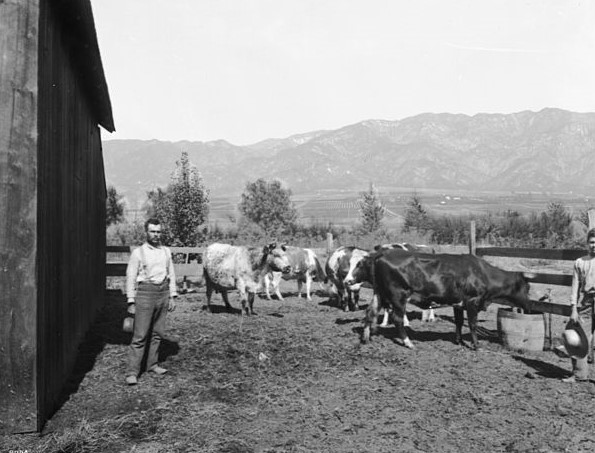
Charley Nebo lived in Canada until 1861. Then, he moved to Saginaw, Michigan. He was a Union soldier during the Civil War and went on to become a cowboy in New Mexico. At one point he actually befriended Billy the Kid. Nebo wrote about him in a letter, saying, “He wasn’t the ruthless bad fellow that Western history has made him out to be.” Nebo apparently gave people the benefit of the doubt, and himself, as a respected cowboy, once shot a man after witnessing him kill a Mexican boy’s dog. In all, Nebo was a common man, humble and capable. He wasn’t what people might call spectacular, but he was a good man, and it took a lot of those good men to build the American West.

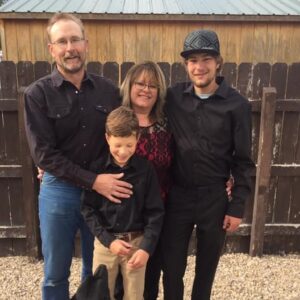 My sister-in-law, Rachel Schulenberg joined our family when she married my brother-in-law, Ron Schulenberg on June 2, 2010. It was a match made in Heaven. Rachel was introduced to Ron by his nieces, Machelle Moore and Susan Griffith. She was perfect for Ron. She was kindhearted and sweet, and a blessing to all who knew her. Rachel was a Christian girl, who worked at a church in Powell, Wyoming, when she was introduced to Ron. She was dedicated to the Lord, and witnessed to everyone she came across.
My sister-in-law, Rachel Schulenberg joined our family when she married my brother-in-law, Ron Schulenberg on June 2, 2010. It was a match made in Heaven. Rachel was introduced to Ron by his nieces, Machelle Moore and Susan Griffith. She was perfect for Ron. She was kindhearted and sweet, and a blessing to all who knew her. Rachel was a Christian girl, who worked at a church in Powell, Wyoming, when she was introduced to Ron. She was dedicated to the Lord, and witnessed to everyone she came across.
Rachel was a wonderful mom to her kids, Cassie Franklin, Riley Birky, and Tucker Schulenberg. She is also an amazing grandmother to her grandchildren, Lucas and Zoey Iverson. I just wish she had known her grandkids, Ryder Birky and Alicen Burr, as well as bonus baby, Jace. She would have absolutely loved these new little ones. Rachel really was a great mom and grandma. It really blessed her heart to become a grandma. I think that quite often, when we are done having kids, we almost immediately start to look forward to having grandkids. After all, it’s all about the babies. Who doesn’t love babies? No one, I know anyway!! 

Rachel was a part of our family for the last ten years of her life. Like her mother, Connie who died in 1985, when she was 35 years, Rachel passed away at a young age. Rachel was just 45 years old when she passed away. It is always so sad when someone so young leaves us so early. Rachel died of a stroke, which is, I believe, how her mother also passed away. Looking back, so many of us wish she was still with us today. Rachel had such a sweet way about her. Kindness radiated from her, because she was kind deep down in her heart. How can someone so young, leaves us so soon? When Rachel left us, she left a huge hole in the hearts of everyone who cared about her…and believe me, that was a lot of people.
Rachel changed everything in Ron’s life, and in the life of her kids and grandkids. My only wish is that their time w
 ith her hadn’t been so short. They all really needed her in their lives for many more years. Rachel’s influence in their lives was beyond huge. Everyone needs the influence of their mother and grandmother, but sadly, when they are gone, you really find out how badly you missed them. There are countless number of times that all you want to do is pick up that phone to ask them a question or tell them about your day. Today would have been Rachel’s 48th birthday. Happy birthday in Heaven, Rachel. We love and miss you very much, and can’t wait to see you in Heaven, when we all get there.
ith her hadn’t been so short. They all really needed her in their lives for many more years. Rachel’s influence in their lives was beyond huge. Everyone needs the influence of their mother and grandmother, but sadly, when they are gone, you really find out how badly you missed them. There are countless number of times that all you want to do is pick up that phone to ask them a question or tell them about your day. Today would have been Rachel’s 48th birthday. Happy birthday in Heaven, Rachel. We love and miss you very much, and can’t wait to see you in Heaven, when we all get there.

 My niece, Kaytlyn Griffith is in middle school now and she has done an amazing job with her grades. Her mom, Susan Griffith tells me that her grades are definitely better than Susan and Kaytlyn’s dad, Josh Griffith ever did. When the honor roll was released the last time a couple months ago Kaytlyn was on it with a 4.0 grade point average. Per parents were so proud, and she truly is an inspiration to them.
My niece, Kaytlyn Griffith is in middle school now and she has done an amazing job with her grades. Her mom, Susan Griffith tells me that her grades are definitely better than Susan and Kaytlyn’s dad, Josh Griffith ever did. When the honor roll was released the last time a couple months ago Kaytlyn was on it with a 4.0 grade point average. Per parents were so proud, and she truly is an inspiration to them.
Because they live in the country, and her parents work, Kaytlyn qualifies for a restricted driver’s license. Kaytlyn is so mature and smart, that even though she barely studied for the written test, she got a 100% on it!! She is very smart. Once a driver passes the written test, they have 30 days to take the driving test. Unfortunately, when Josh went to take Kaytlyn for the driving test, they were told that she had to have an appointment, which we didn’t know before, because it never was that way in years gone by. Anyway, they had to reschedule the test. They couldn’t get an appointment until the 30 day…talk about cutting it close. They were all quite stressed. If she didn’t pass, she wouldn’t be able to try again another year.
Then, they found out that the test in was in Cody, rather than Lovell because that was the only option. Well, that added another stress factor because the traffic in Cody is very different than the traffic in Lovell. So, they spent the Thanksgiving holiday break making trips to Cody, so she could practice there for 2 to 3 hours a day.
To make matters worse, it snowed quite a lot on the day of the test. Nevertheless, they had to go or Kaytlyn would have to wait for another year. Then, the lady asked if she wanted to reschedule, to which Kaytlyn answered, “Absolutely not!!” Kaytlyn took the test driving her mom’s Tahoe which had 4-wheel drive, thankfully with an inch of snow on the ground. Kaytlyn did amazing. She didn’t slide at all in the intersections…pretty good for a 14-year-old girl!! It helped that she got to drive slower because of the snow. In the end, the snow, which they thought was a negative factor, ended up helping her a lot. Kaytlyn passed!! Her parents were quote proud and relieved. She only did one thing wrong during the test. Not bad for a young, first-time driver.
Her parents were so proud of her, and her dad fixed up a little car for her. The front end had been wrecked, but 
 Josh had some new parts for it. Because it was two different colors, Josh, who is pretty innovative, made the color change a little more interesting by putting flames between the colors. It fits perfectly with Kaytlyn’s sense of humor.
Josh had some new parts for it. Because it was two different colors, Josh, who is pretty innovative, made the color change a little more interesting by putting flames between the colors. It fits perfectly with Kaytlyn’s sense of humor.
Kaytlyn has grown up so fast. As her mom was looking through pictures from the past couple years, she was shocked at how much she had blossomed into a beautiful young lady. With her grades and everything else in her life, Kaytlyn has a bright future ahead of her. With her grades and everything else, her parents are beyond proud of her. They love her so much that words don’t cany begin to explain it. And we are all very proud of her too. Today is Kaytlyn’s 15th birthday. Happy birthday Kaytlyn!! Have a great day!! We love you!!

 The Sinking Ship parking garage in Seattle is aptly named, a fact which you can clearly see when you look at it. The building is a multi-story parking garage in Pioneer Square and James Street to the north, Yesler Way to the south, and 2nd Avenue to the east. It is just steps away from the Pioneer Building on the site of the former Occidental Hotels and Seattle Hotel. The look of the structure gives the illusion of a sinking ship, even though it is level. After the Seattle Hotel was demolished in 1961, the Sinking Ship was built as part of a neighborhood redesign.
The Sinking Ship parking garage in Seattle is aptly named, a fact which you can clearly see when you look at it. The building is a multi-story parking garage in Pioneer Square and James Street to the north, Yesler Way to the south, and 2nd Avenue to the east. It is just steps away from the Pioneer Building on the site of the former Occidental Hotels and Seattle Hotel. The look of the structure gives the illusion of a sinking ship, even though it is level. After the Seattle Hotel was demolished in 1961, the Sinking Ship was built as part of a neighborhood redesign.
Designers Gilbert H Mandeville, an engineer and Gudmund B Berge, an architect of the Seattle firm Mandeville  and Berge built the structure in 1965. They also designed the Logan Building and an addition to the First Presbyterian Church downtown, the Ballard branch of Seattle Public Library, which is an unusual building too, although not like the Sinking Ship, and two buildings at the Seattle World’s Fair in 1962….the Alaska Building and the Transportation 21 Building, neither of which are really unusual.
and Berge built the structure in 1965. They also designed the Logan Building and an addition to the First Presbyterian Church downtown, the Ballard branch of Seattle Public Library, which is an unusual building too, although not like the Sinking Ship, and two buildings at the Seattle World’s Fair in 1962….the Alaska Building and the Transportation 21 Building, neither of which are really unusual.
The parking It is owned by the Kubota–Fujii family, who had acquired the Seattle Hotel in 1941. Doris Kubota, from the same family, called the garage the “ugliest building in all of Seattle.” During the 2001 Mardi Gras riot the building was used as a staging area for police and city officials. The Seattle Monorail Project had hoped to acquire the site through condemnation to turn it into a monorail station at the site of the Sinking Ship, but the Kubota family disputed the condemnation lawsuit, stating their intention to build housing and retail at the site.

 While Doris Kubota thought the building was ugly, it was named the “coolest parking lot” in the United States by the design publication Architizer Journal in 2019 and still remains on that list today, dropping to 4th place. While I agree that it is cool, I’m not a fan of concrete buildings. Still, it makes sense for a parking structure to be made out of concrete. As of 2022, the garage is managed by Diamond Parking, and it is open 24 hours a day.
While Doris Kubota thought the building was ugly, it was named the “coolest parking lot” in the United States by the design publication Architizer Journal in 2019 and still remains on that list today, dropping to 4th place. While I agree that it is cool, I’m not a fan of concrete buildings. Still, it makes sense for a parking structure to be made out of concrete. As of 2022, the garage is managed by Diamond Parking, and it is open 24 hours a day.

